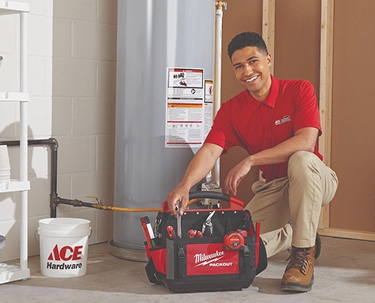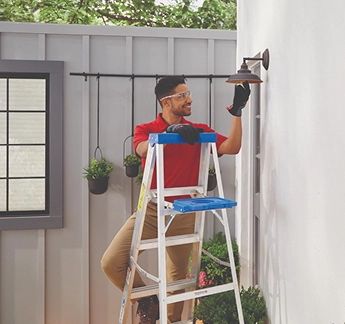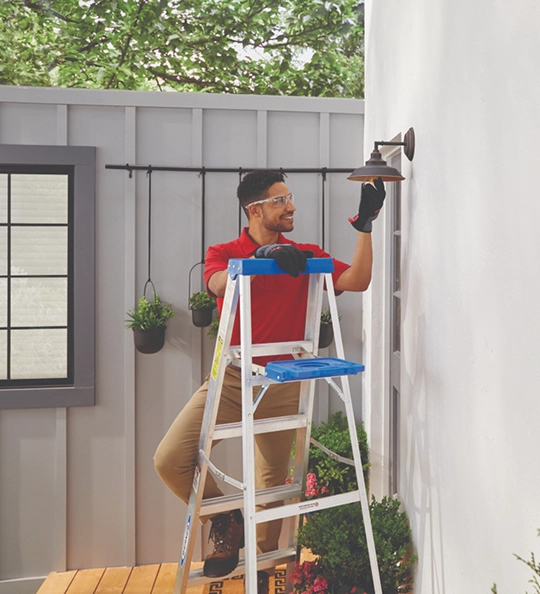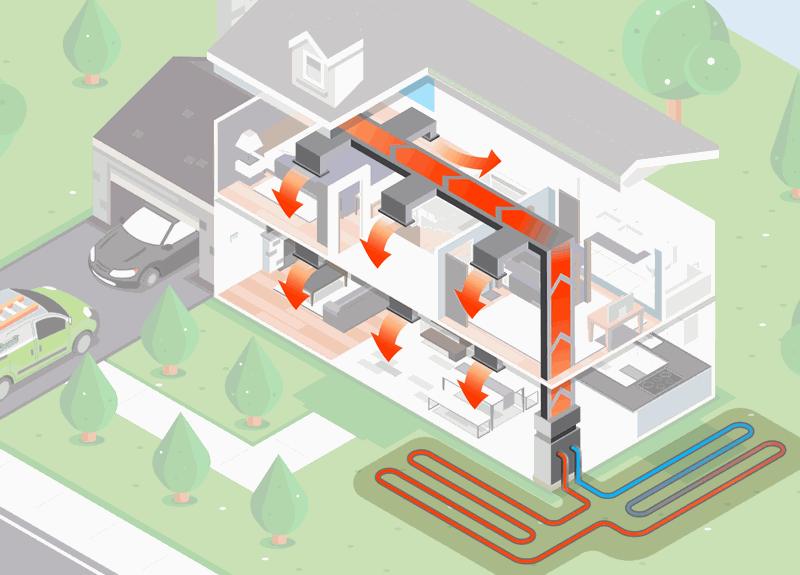
GEOTHERMAL HVAC SERVICE, INSTALLATION & REPAIR
The U.S. Environmental Protection Agency has identified geothermal heat pumps as a technology that significantly reduces greenhouse gas and other air emissions associated with heating, cooling and water heating residential buildings, while saving consumers money, compared to conventional technologies.
For every 100,000 units of typically sized residential geothermal heat pumps installed, more than 37.5 trillion BTU’s of energy used for space conditioning and water heating can be saved. This corresponds to an emissions reduction of about 2.18 million metric tons of carbon equivalents and a cost savings to consumers of about $750 million over the 20-year-life of the equipment.
Compare a geothermal system to the other types of home heating systems in our HVAC U article “Selecting a Home Heating System”.
Geothermal heating and cooling systems are one of the most, if not the most, efficient home heating system available. This type of system is unique because it harnesses the heat from within the ground, instead of using energy to create heat.
A few meters below the surface, the earth maintains a nearly constant temperature between 50°F and 60°F. The ground is able to absorb over 40% of the sun’s heat so even as the surface temperature changes, the temperature below stays constant. This stability is key in geothermal heating and cooling systems. It also explains why this system is so energy efficient.
Geothermal heat pumps then relocate the underground heat to the home, to provide heating and hot water at remarkably high efficiencies. As with normal heat pumps, this process can be reversed when we want to cool the home instead of warm it up.
How it Works
In simple terms, a geothermal heat pump draws heat from the ground and releases it in your home through a series of small-diameter, High-Density Polyethylene (HDPE) pipes that are buried underground. These pipes are referred to as a “ground loop,” and the loop circulates water as a medium to move heat energy to and from your home.
Geothermal heating and cooling systems only require a single indoor heat pump (unit) which connects the home and underground ground loop. This indoor unit will be connected to the homes ductwork or radiant heating system to provide forced-air or radiant heat
There are two different types of geothermal heat pumps: closed loops and open loops.
Closed Loops
Closed-loop geothermal heat pumps consist of a series of pipes laid underground circulating a heat-absorbing carrier fluid (antifreeze).
A heat exchanger transfers heat between the refrigerant in the heat pump and the antifreeze solution in the closed loop. Once the fluid circles through, it then returns to the source again, completing the cycle.
There are three different types of closed loop circuits: Horizontal Loops, Vertical Loops and Pond/Lake Loops.
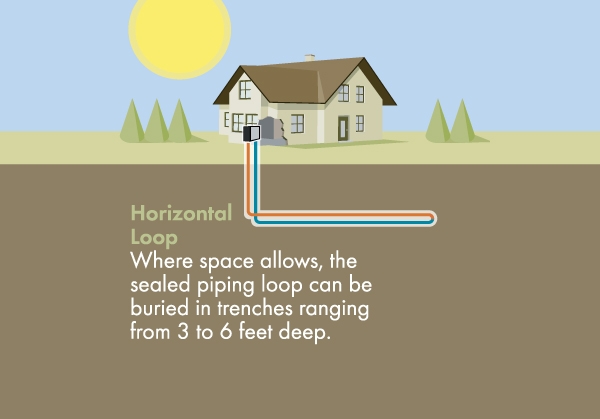
Horizontal Loops
Horizontal loops consist of layered coils or straight runs of HDPE pipe are placed in trenches that are about 6 feet deep.
Horizontal loops are the most common type of geothermal heat pumps, as long as sufficient land is available. Generally speaking, a 2,000 square-foot house requires 400 feet of 2 foot-wide trenches.

Vertical Loops
A vertical system is used when space is limited or the soil is very shallow. Holes are drilled about 15 feet apart and are pushed into the ground about 100 to 400 feet deep. Two HDPE pipes are then inserted and connected at the bottom.
Vertical loops are usually popular choices for large commercial buildings and schools.
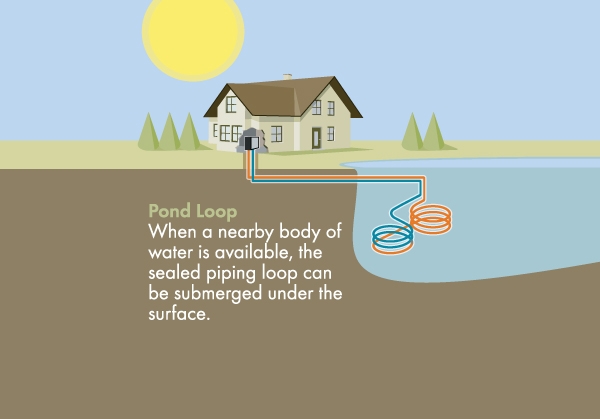
Pond/Lake Loops
If your home is located near a lake or pond, you may be able to install pond/lake loops, which are extremely efficient and cheap to install.
This system draws heat from water rather than from the soil. A blanket of water covers the coils made of HDPE pipes and those pipes are anchored on racks about 10 feet deep.
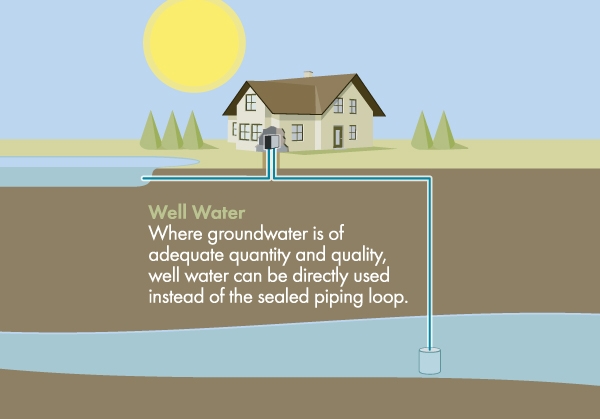
Open Loops
Open-loop systems circulate surface water or water from a well through the geothermal heat pump and return it to the ground through a discharge pipe.
Open-Loops
Open-loop systems are much less common because they can only be used if there is an adequate supply of relatively clean water nearby and because mineral build-ups can happen.
Why Geothermal?
Install it and Forget it – One of the major benefits of geothermal systems is that once the system is installed, you won’t have to worry about replacing the system, maintaining the system or worrying about fuel.
- Geothermal systems are significantly more durable than traditional air conditioning systems which remain efficient for almost 8 years. Geothermal systems remain effective for about 50 years.
- Since geothermal systems are underground, they are protected from the elements, meaning they require minimal maintenance.
- Because geothermal systems don’t require gas or oil, only minimal electricity, in order to function, you won’t have to worry about having access to natural gas lines or scheduling and paying for regular oil deliveries.
Quiet Performance – Unlike other systems, such as a furnace or electric heat pump, geothermal systems do not require a noisy outdoor compressor or fan. The indoor unit of the geothermal system is generally as loud as a refrigerator, making it one of the quietest home heating and cooling systems.
Even Heating – Because the geothermal heat pump connects directly to your homes ductwork or radiant heating system, the air is distributed evenly throughout the home, so you won’t have to worry about one room being hotter or cooler than another.
Environmentally Friendly – In contrast to fossil fuel systems, like gas or oil furnaces and boilers, geothermal heat pumps emit no combustion by-products and have the lowest Co2 emissions of any space heating unit.
Considerations for Your Home
Installation Cost – Installing geothermal heat pumps can cost anywhere between $25,000 and $40,000. This price range includes the cost of the ground loops, materials and the labor cost. The main factors affecting the price is the type of heat pump you choose and if your home already has a duct system in place.
Extremely Efficient– While geothermal installations can be costly, once the system is installed, homeowners see a 40-60 percent reduction in their annual energy/utility bill on average. In fact, geothermal systems typically pays for itself in two to ten years. Geothermal heating and cooling systems are considered one of the more efficient home heating systems available.
Outdoor Space – The outdoor space around your home will be a determining factor for which type of geothermal heat pump you can install. If you have adequate yard space, you will want to go with horizontal loops, as they are a cheaper option than vertical loops. However, if you have access to a pond, pond/lake loops will be your most inexpensive option.
Want to learn more about Geothermal Heating and Cooling Systems?
Have questions, or interested in installing a geothermal heating and cooling system for your home? The experts at Unique Indoor Comfort would love to help!
FAQ’s
Does the type of loop affect the cost of installing a geothermal system?
Yes, the installation price of the geothermal system is extremely dependent on the type of loop installed. Below we compare the prices for the different closed loops systems, since open loop systems are increasingly becoming obsolete.
Average prices for closed-loop systems:
- Horizontal Loop: $1,800/ton – $2,500/ton.
- A 2,000 square-foot home typically requires a 5 ton heat pump, so it will, most likely, cost between $9,000 to $12,500 to install horizontal loops.
- Vertical Loop: $2,000/ton – $3,000/ton.
- A 2,000 square-foot home typically requires a 5 ton heat pump, so it will, most likely, cost between $10,000 to $15,000 to install vertical loops.
- Pond/Lake Loop: $1,200/ton – $1,800/ton.
- A 2,000 square-foot home typically requires a 5 ton heat pump, so it will, most likely, cost between $6,000 to $9,000 to install the pond/lake loops.
These prices only include the cost of the materials. Labor costs, and any additional costs, are not included.
I have an older home, can I still install a geothermal system?
Geothermal heating and cooling systems can be retrofitted into your home. In a home with an existing forced-air system, like a furnace, a geothermal system can use the existing ductwork to heat or cool the home.
In addition, if you do currently have a furnace or boiler in your home that is more than 15 or 20 years old, it may make sense to replace it with a geothermal system, to save on utility expenses in the long-term.
Can a geothermal heat pump be used for both heating and cooling?
Yes. Even though it’s called a “heat pump”, it can be used for both heating and cooling a home. The heating process is just reversed when you want to cool the home instead of heat it.
What are the advantages of geothermal heating and cooling systems?
Geothermal systems have a lot of advantages over other home heating and cooling systems. Geothermal systems are:
- Extremely energy and cost-efficient once installed
- Provide stable, even temperature throughout the home
- Create minimal noise
- Provide clean air, a preferable choice for people who suffer with allergies
- The most environmentally friendly heating system
However, if you are considering installing a geothermal system, you first need to make sure you have the required outdoor space and you are willing to front the initial installation cost which, depending on your circumstances, could be upwards of $15,000.
